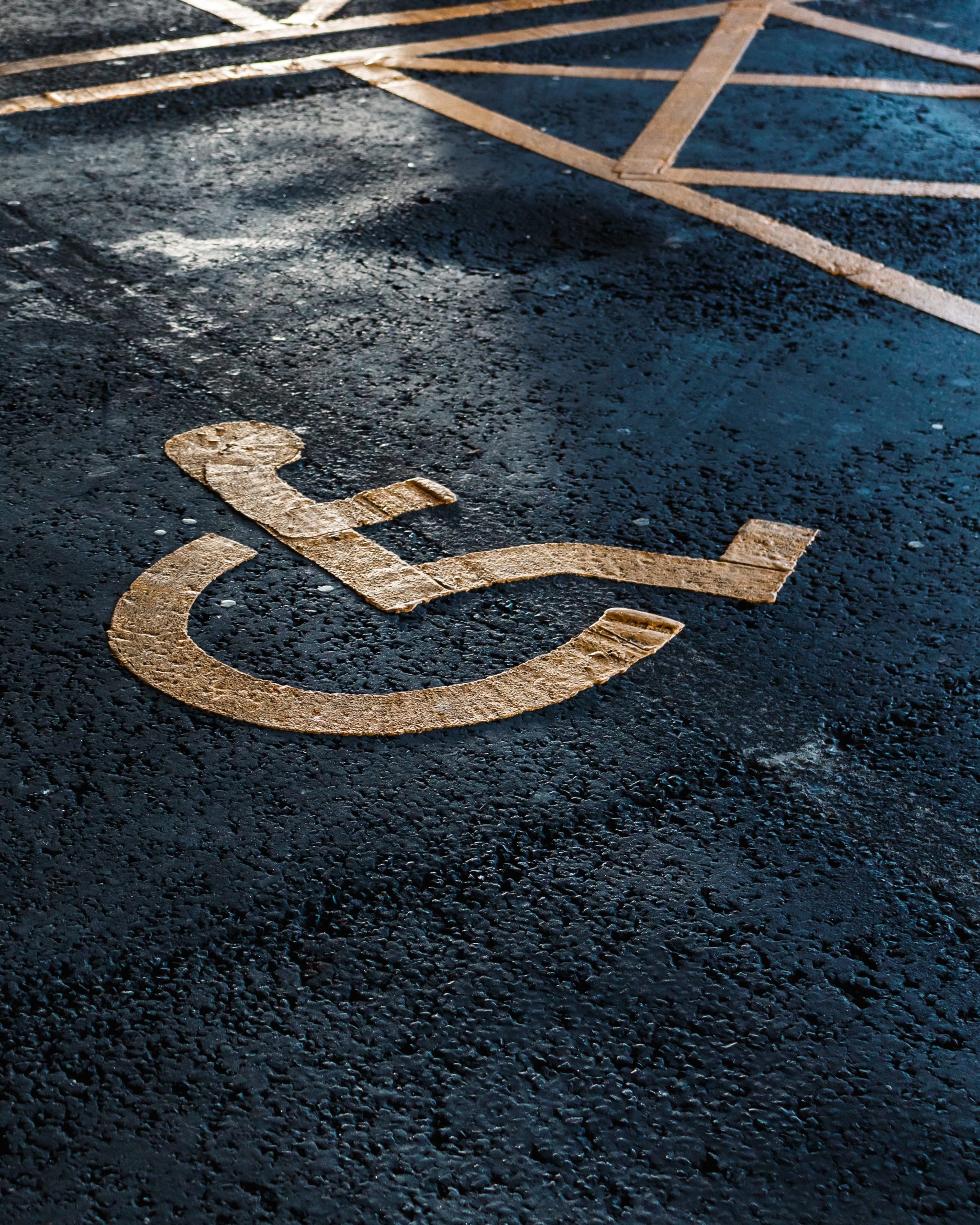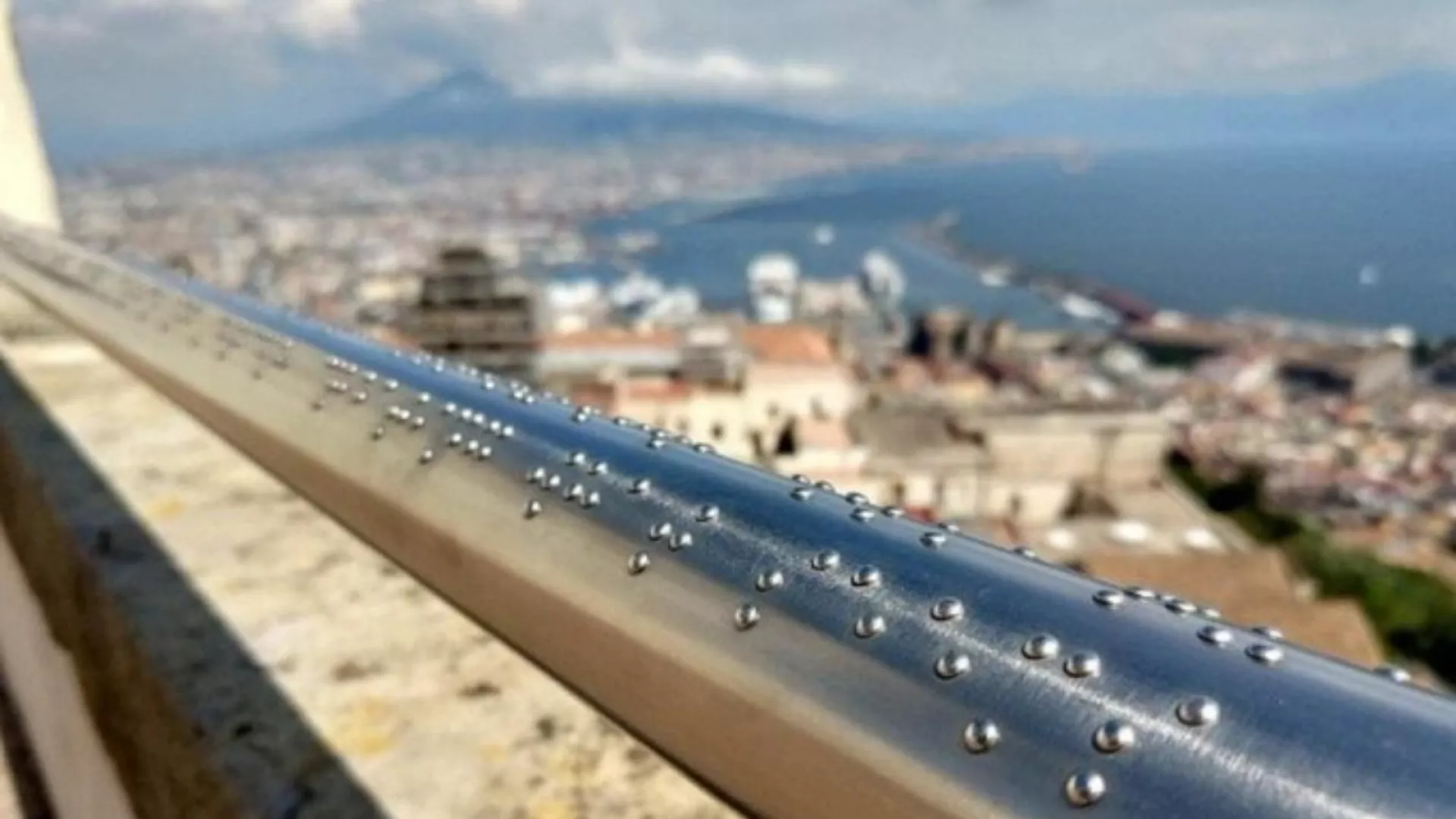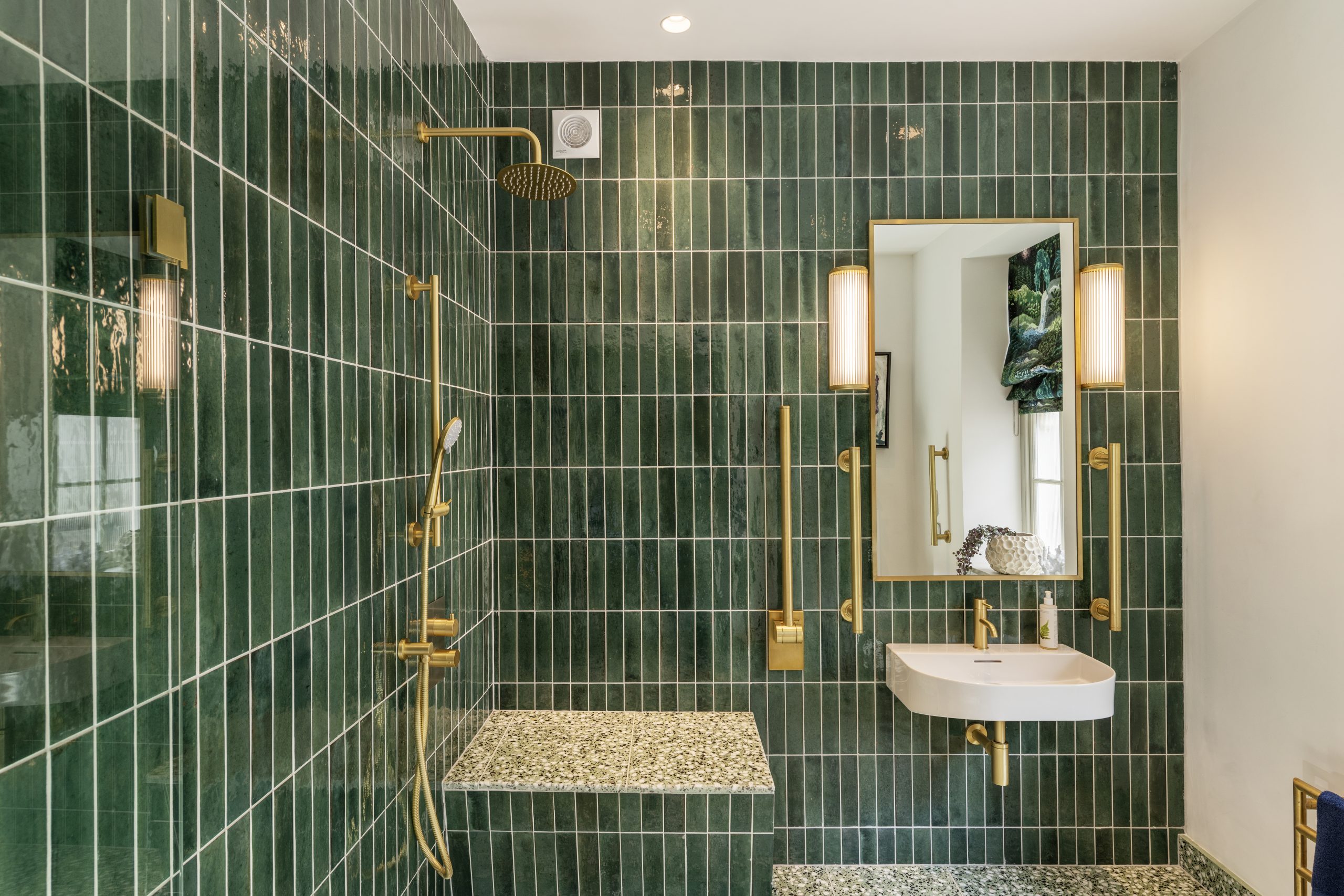
Accessibility

We need to make sure that the world is as accessible as possible, during our work and ongoing research we constantly add to our arsenal of information to help us design more accessible spaces.
Building regulations will not mandate accessibility in some circumstances, but that shouldn’t matter. You should be doing the utmost to improve the world for people living with disabilities.
Change your mindset
The universal symbol for disability depicts a person in a wheelchair, which is unfortunate as there are many more aspects to consider. The first key thing to understand is that people’s abilities are many and varied. Some disabilities are hidden and there is a broad spectrum of challenges faced.
For example, visual impairments can make it difficult to distinguish items of similar colour. This is a reason building regs defines that stair nosings should contrast to the floor, and why glazing requires manifestation.
Physical disabilities can affect all parts of the body, consider this when deciding how items are handled, navigated through or operated. It’s possible for someone to be able to climb stairs but not turn a lock.
Consider all senses can be affected by people, one often overlooked aspect is hypersensitivity often experienced by people with autism. Controlling acoustics and glare from lighting can help to limit sensory overload. Here is a fantastic article ‘How autism-friendly architecture can change autistic children’s lives’ by Joan Love, lecturer at Leeds Beckett University. A lot of the principles in this article also apply to adults who are often missed in this conversation.
Start at the beginning
For any refurbishment or fitout project, have accessibility in the forefront of your mind from the very beginning. It’s much easier to ‘design out’ issues rather than try to create solutions to them later.
A key consideration is that the experience should be the same for all. Ensure everyone uses the same entrance, place lifts next to stairs, keep all toilets in the same place. If your site is over multiple floors, you should provide access to the other floors or duplicate the offering.
This is a brilliant example where a railing in Naples includes braille that describes the view.

Finally, people shouldn’t have to ask, make sure everything is clear and simple and use signage if needed.
Toilets
In a lot of situations this is likely to be the key area of focus and is thankfully more common and better understood than other aspects.
If you have one toilet, make it accessible. Even if you have a step into the unit, this doesn’t exclude you from the obligation to provide adequate facilities. As mentioned earlier, someone may be able to manage steps into the establishment, but may need the features offered by an accessible toilet.
If this means you lose floor space due to the area required, then that’s something you’ll need to deal with. If accessibility is considered from the start then this should be in your checklist when choosing the space in which to open your business.
If you have multiple toilets, have them in the same space and with the same features/benefits. Put the same amount of effort into the design and finishes, take a look at the great shower room example below created by Day True for Fitzroy of London.

Position the toilet so it is concealed, or include a lobby. It might be much less space efficient, but it’s quite demeaning to be in direct view of everyone in the place when you enter/exit the bathroom.
Doors open outward for a reason, if someone fell against the door it means it can still be opened. This can be tricky with confined space. In these situations, pocket doors are very useful, they are much easier to open and can even be power assisted.
This final aspect is something of a bugbear; don’t impact the accessibility of the toilet. Key points here are:
- It’s not a store room, you’d be surprised how many times I see the mop bucket stored in an accessible WC – keep it totally clear
- Don’t put in any additional furniture that impacts the floor space
- If adding a baby change, use a wall mounted one
- The alarm cord should almost touch the floor, it’s not a mistake, make sure it doesn’t get cut, tied up or hung over something
- The flush, tap and door handle should all be the lever type that can be operated with a closed fist – if they need changing then swap for an equally DDA compliant one
- Make sure the route to the toilet is clear and simple to navigate
Seating
It’s easier to consider this in a restaurant environment but it should be more commonplace in other establishments as well. There are so many spaces in city centres with not enough places to sit down.
The design of seating should also be well considered. Offer a range of seat heights if possible, if not avoid exclusively low or high seating. Make sure they’re well made and sturdy, there’s nothing worse than flimsy seating especially for someone who may find it difficult to sit or stand.
Avoid bare metal finishes, especially outside, which can feel very cold and could be particularly uncomfortable for some people. Likewise with excessive texture.
Provide contrast, if your chairs are the same colour as your flooring it will make it difficult to navigate for someone with impaired vision.
Tips & Links:
- Consider employing a specialist consultant such as Amy Francis-Smith
- Avoid fixing things down – like payment terminals, it’s annoying anyway but can add a lot of stress and burden for someone with a disability
- Accessible toilets need to be 1.5m x 2.2m with a 1.5m diameter clear turning area outside of the door
- Provide options, if you have a printed menu, have a large print version, don’t rely on a board behind the counter
- Think about installing a hearing loop
- Avoid adding an accessible version, make the default accessible, look at the refurbishment of Hammersmith Town Hall as an example


